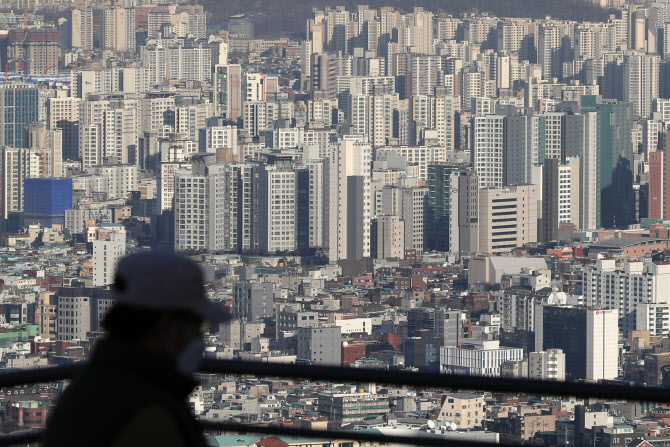According to the Seoul Metropolitan Government on the 2nd, it is said that there is a high possibility that the Seoul Metropolitan Government will hold the first temporary meeting of Seoul at the end of this month and pass the “partial amendment of the Urban Planning Ordinance,” which newly establishes a high-density residential-type quasi-residential area within the quasi-residential area.
Previously, the Seoul Metropolitan Government decided to reduce the floor area ratio to 500% instead of donating rental housing when participating in public reconstruction involving public institutions.
Currently, Seoul City is able to further subdivide the use area due to the revision of the Enforcement Decree of the National Territory Planning Act in 2019, and has been carrying out the service of “establishment of the Seoul-type application area system reorganization plan” for further subdivision since March last year. Nevertheless, it is interpreted that the urgency of expanding housing supply was reflected in the background of the hastily pushed forward with this ordinance.
In the amendment, the floor area ratio of high-density residential-type quasi-residential areas is set to be 500% or less, which is the legal upper limit of quasi-residential areas, but the building-to-land ratio is 50% or less in accordance with the type 3 general residential area. It also contains the addition of massage parlors, automobile stadiums, and factories to the unacceptability of the existing quasi-residential area. The non-residential ratio was also reduced to 5% compared to the existing quasi-residential area (10%).
An official from Seoul said, “In order to realize public participation-type high-density reconstruction, it is necessary to secure a floor area ratio of 300-500%, but if it is upgraded to a semi-residential area of a general residential area, it is difficult to create a suitable residential environment for an apartment complex.” Even if the maximum floor area ratio of general residential areas is not raised, the legal maximum floor area ratio of 500% can be applied by subdividing the sub-residential area.”
Initially, the city of Seoul was in a position to pass the relevant amendment last year, but it was put on hold during the process of examining the bill. A city council official said, “There is a point that a specific case is needed, such as whether there is a business area that can apply a floor area ratio of 500%, and the request for supplementation was made.” “Because there is no big disagreement, it is highly likely that the temporary meeting in February will pass without difficulty.” .
|
In addition to the public participatory high-density reconstruction project, the city of Seoul plans to apply high-density residential-type quasi-residential areas to public redevelopment projects, high-density housing construction projects, and high-density residential complex development projects in the station area.
However, some point out that there may not be many cases that are actually applied among public reconstruction projects because they are concerned about the deterioration of the residential environment due to excessive density. The high-density residential-type quasi-residential area is currently intended for use beyond the Type 3 general residential area, and is expected to be limited to areas facing a road with a width of 25m or more. Even if high-rise apartment houses are built in areas with good traffic conditions such as roadsides and station areas, they are limited to areas where the impact on surrounding areas can be minimized.
In fact, looking at the results of six reconstruction apartment complexes that recently participated in pre-consulting for public reconstruction, only one was allowed up to 500% floor area ratio.
Im Jae-man, professor of real estate at Sejong University, said, “The floor area ratio of public housing is quite high. It is difficult” he said.

